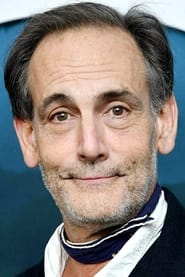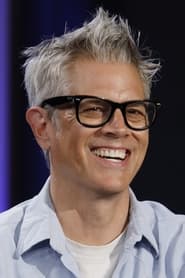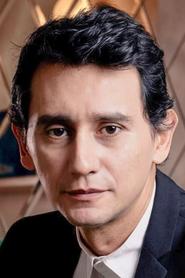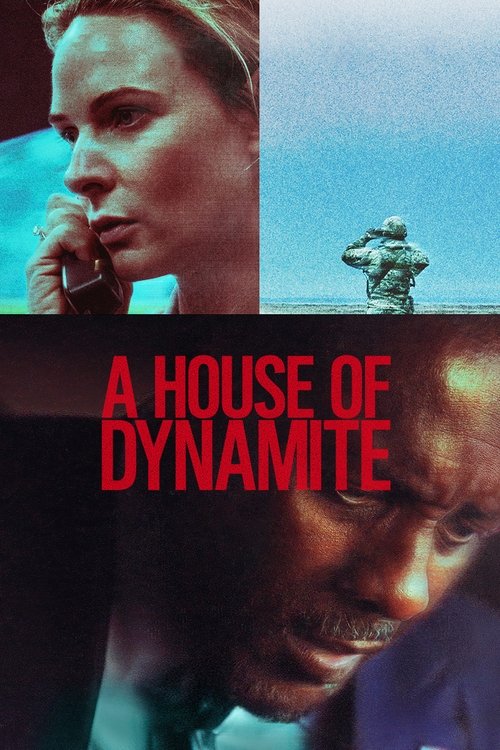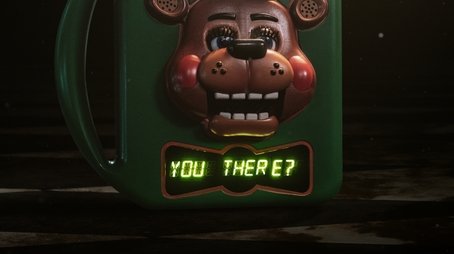
Ask Your Own Question
What is the plot?
The film opens in 1984 with Michael Larson driving his ice cream truck through a quiet neighborhood, the vehicle's bell jingling as he navigates suburban streets. He carries himself as a worn but determined man who has fallen on hard times; on a whim he slips into the studio offices of the daytime game show Press Your Luck when he sees a notice for auditions and discovers that one contestant has not arrived for his slot. Inside the building Larson meets Chuck, the contestant coordinator, and Bill Carruthers, the show's executive producer. Larson sits and speaks about his life while Chuck listens. When the originally scheduled candidate arrives, studio personnel politely remove Larson from the waiting area, but Carruthers pauses before Larson walks away. Carruthers tells Larson to come back the following day and books him for the taping, having been struck by the man's underdog aura and the possibilities that such a contestant might bring to the show.
The next day Larson takes his place under the stage lights alongside the two other challengers: Ed, a minister who holds the champion seat, and Janie, a dental assistant hoping to claim a win. Peter Tomarken, the show's host, introduces the trio and begins the trivia round. Larson fumbles on some of the early questions, answering slowly or not at all, while Ed and Janie trade correct responses and bank spins and money. Despite a shaky start, Larson accumulates a modest number of spins and steps up to the big, brightly lit gameboard. His first visit to the board yields cash but then a Whammy appears, an animated calamity that wipes his total to zero and knocks him from a promising place in the standings.
Because he finishes the trivia round in last place, Larson goes first when the big board action resumes. Standing before the matrix of flashing lights, Larson begins to play with a rhythm that alarms the production crew. He repeatedly lands on squares that award both money and additional spins, and his totals swell rapidly; in a short span he moves past $16,000, then far beyond it. As the second round progresses, Larson's winnings compound. He hits sequence after sequence of favorable squares, pocketing cash and extra turns, and his demeanor flickers between elation and intense concentration as he watches the lights circle the board.
Bill Carruthers and his production team evaluate the situation in the control room and in the wings with growing unease. The show's mechanics are presented to the audience as random, and Larson's string of successes strains their belief in chance. Chuck, tasked with ensuring fair play, begins to suspect something more than luck at work. He decides to search Larson's ice cream truck for evidence. In the predawn light, Chuck uses a key to access the vehicle and inspects its contents; he uncovers an array of odd items--a collection of driver's licenses and license plates, and boxes of videotapes. Initially the tapes look like family recordings, but Chuck takes them to a monitor and plays them. As the footage rolls, it becomes clear that these are not home movies; they are recordings of past episodes of Press Your Luck. Chuck notices patterns in the way the board's lights scroll and alternately freeze in one of five specific sequences. He replays Larson's earlier spins and sees that Larson's eyes follow the light as it moves, that he lifts his fist or gives an instant, small celebration at the precise moment the board settles. The picture resolves: Larson has studied the board's rotation patterns and memorized the five sequences the game uses.
Word of Chuck's discovery travels immediately to Carruthers. The producers convene in a small room off the stage, where Carruthers and his team debate how to respond. Their initial reaction is to disrupt Larson by any means necessary; they try to interfere with his focus as he continues to amass money on live television. Crew members shift camera angles and change cue lights in an effort to distract him during his turns. Stagehands move in the periphery of his vision and technicians alter the noise levels in the studio to break his concentration. Those efforts produce moments of irritation but do not stop Larson from continuing to spin. As his total climbs, the producers face a dilemma: expose him for cheating and risk scandal, or let him play and capitalize on the swelling public fascination with an unbeatable contestant. Carruthers determines that Larson's improbable streak could turn into huge ratings for the show; he opts to use Larson's success as a promotional boon. The production staff, now complicit in allowing him to continue, returns to their posts and watches the game unfold with a mixture of professional curiosity and nervous calculation.
Larson's winnings escalate through the final round until his cumulative total tops $109,000, and only one spin remains between him and the game's conclusion. Throughout the taping Larson works a small, battered pay phone during breaks, repeatedly attempting to reach his estranged wife Patricia to explain himself and to mend whatever remains of their frayed relationship. During one such pause, Chuck picks up on Larson's personal history and arranges for Patricia to be brought into the studio via telephone immediately before Larson takes what could be the final decisive spin. When studio staff connects the call, Patricia's voice comes over the line and the conversation turns sharp and public. Patricia confronts Larson about a divorce petition and the legal papers she has had him sign. She demands answers and then ends the call abruptly, hanging up on him. The interruption sends Larson into a shock; he staggers off the stage and retreats into the corridor behind the set, where he locks himself inside a dressing room. He sits on a narrow bench, hands pressed to his face, overwhelmed by the sudden personal crisis.
Ed, the minister who had been Larson's on-air rival, finds the dressing room door and sits with Larson. Ed speaks softly to him, offering comfort and attempting to persuade him to return to the cameras, to finish what he started. Ed's demeanor is one of genuine compassion rather than competitive glee; he reminds Larson that the audience is waiting and that many people have already rallied to his side. As Ed continues to speak, Carruthers arrives and stands in the doorway. He tells Larson that he knows Larson has learned the board's five patterns from the videotapes, that Chuck has shown him the evidence. Carruthers acknowledges the irregularity but speaks to the opportunity: Larson is on the verge of becoming a national sensation, a beloved figure who could transform his life. He urges Larson to go back out, to complete the game, and assures him that the audience will respond with admiration. Carruthers frames the choice as a chance at a new future rather than a prosecution of cheating.
Shaken but persuaded by the combination of Ed's empathy and Carruthers' promise, Larson leaves the dressing room and returns to the stage. The audience begins to chant his name as he walks into the lights. Cameras sweep across the crowd and the energy in the studio shifts toward celebration. When the board resumes, Larson has the final spin in hand. He faces Carruthers and, in a move that surprises the production team, Larson elects to pass his remaining spin to Ed instead of keeping it for himself. The audience erupts into cheers and a standing ovation rises through the bleachers; Larson's decision reads as an act of sportsmanship and humility that the crowd rewards immediately.
Ed takes Larson's spin and, within moments, the Whammy animation appears on his space, and the sequence strips Ed of his accumulated winnings. He loses the lead he had maintained and walks back in stunned disappointment. Janie steps up and takes several consecutive spins, collecting small amounts before she, too, chooses to pass a final spin. She passes that spin back to Larson, returning the decisive moment to his hands. Larson, who has been playing with a remarkable command of the board's rhythms, now faces a strain on his faculties; the hours under studio lights and the emotional toll of the phone call leave him fatigued. When Larson returns to the board, his vision of the familiar patterns has blurred. He can no longer track the light the way he did earlier. Sitting in the hot glare and hearing the audience lean forward, Larson closes his eyes, lets his finger fall upon the big red stop button, and triggers the board. The machine clunks and the lights settle. When he opens his eyes the board shows a prize square rather than a Whammy. The announcer declares the prize, the audience roars, and Larson's final totals are called.
After the taping wraps, weeks pass and the episode airs on national television. Patricia watches the broadcast at home and sees Larson's final success unfold on the screen. Viewers learn that Larson has walked away from the episode with cash and prizes amounting to $110,237. Carruthers honors a prior understanding and crowns Larson with the show's promotional title, a designation that the network packages as the "Luckiest Man in America." Larson receives the public accolades and a moment in the national spotlight.
No characters die during the events depicted in the film.
Near the end of the credits the film includes archival material: a mid-credits sequence shows a real clip from the 1984 Press Your Luck program, with Peter Tomarken interviewing Michael Larson after his remarkable game. The camera lingers on Larson's expression as the interview plays, then the film fades out on the studio lights and the image of the gameboard, closing the story with the factual coda of the historical footage.
What is the ending?
Short Narrative of the Ending
In the movie "The Luckiest Man in America," Michael Larson, an unemployed ice cream truck driver, wins a significant amount of money on the game show "Press Your Luck" by memorizing the patterns on the show's board. As he nears his final spin, an emotional breakdown occurs after a call from his estranged wife. However, he returns to the show, and instead of taking his final spin, he passes it to another contestant, Ed, who loses all his money. Ultimately, Larson wins cash and prizes totaling $110,237, earning him the title of "Luckiest Man in America."
Expanded Narrative of the Ending
The climax of "The Luckiest Man in America" unfolds with Michael Larson, played by Paul Walter Hauser, on the verge of completing his historic run on "Press Your Luck." The tension builds as Larson, having memorized the board's patterns, continues to win, much to the show's producers' initial delight and subsequent dismay. As his winnings surge past $100,000, the producers, led by Bill Carruthers, begin to suspect that Larson's success is not mere luck but a well-planned strategy. They start to apply pressure to break his concentration.
In a pivotal scene, Larson is caught off guard when his estranged wife, Patricia, is brought into a phone call on the show. This emotional blow causes Larson to flee the set, locking himself in a dressing room. Ed, a fellow contestant, sympathizes with Larson, and Carruthers, recognizing the potential for a dramatic finish, encourages Larson to return and complete his victory. The audience, sensing the drama, begins to chant for Larson, urging him back onto the stage.
Upon his return, Larson makes a surprising move by passing his final spin to Ed, an act that earns him a standing ovation from the crowd. However, Ed's luck is short-lived as he lands on a "Whammy," losing all his winnings. The board is passed back to Janie, who eventually returns it to Larson for one final spin. Exhausted and unable to see the patterns clearly anymore, Larson closes his eyes and stops the board, miraculously landing on a prize.
The film concludes with Larson's televised appearance being watched by his estranged wife, Patricia. Larson's total winnings amount to $110,237, solidifying his title as the "Luckiest Man in America." The ending highlights the themes of perseverance, deception, and the blurred lines between luck and strategy, as well as the emotional turmoil Larson faces throughout his journey.
Is there a post-credit scene?
Yes, The Luckiest Man in America (2025) features a post-credit scene. It shows a clip from the real 1984 Press Your Luck episode that inspired the film, featuring Michael Larson being interviewed by the game show host Peter Tomarken. The real-life Ed and Janie, who were also part of the original episode, briefly appear in this mid-credits scene, providing an authentic connection to the true story behind the movie.
How does Michael Larson discover the hidden patterns on the Press Your Luck game board?
Michael Larson discovers five hidden patterns within the Press Your Luck game board that allow him to predict the outcomes and avoid the 'Whammy' that causes players to lose their winnings. This secret knowledge is the key to his success on the show.
What tactics do the show's producers use to try to stop Michael Larson from winning?
The producers, including Bill Carruthers and Chuck, attempt increasingly intrusive means to break Michael Larson's concentration during the game, as they are desperate to stop him from winning due to his unusual success.
What is the significance of Michael Larson's estranged wife Patricia during the game show taping?
During the taping, Patricia, Michael's estranged wife, is brought into a phone call on the show where she asks him to sign their divorce papers and then hangs up. This causes Michael to have an emotional breakdown, flee the set, and lock himself in a dressing room.
How does Michael Larson respond after returning to the game following his emotional breakdown?
After returning to the set, Michael defies expectations by passing his remaining spin to fellow contestant Ed, who then hits a Whammy and loses all his winnings. Michael later takes back the spin and ultimately wins the game.
What role does Bill Carruthers play in Michael Larson's game show appearance?
Bill Carruthers, the show's executive producer, initially chooses Michael Larson as a contestant because he thinks Michael's personality will attract viewers. Although Carruthers knows Michael has memorized the patterns, he decides to let him win to promote the show and make Michael a star beloved by the audience.
Is this family friendly?
The movie The Luckiest Man in America (2025) is generally a drama/thriller focusing on characterization and ethics, with Paul Walter Hauser delivering a strong central performance. Reviews indicate it explores complex themes around the American Dream, media narratives, and personal characterization.
Regarding family-friendliness, there is no direct mention that the film is designed specifically for children or family audiences. The tone is often serious and intense, with emotional and psychological complexity. The film is not described as comedic or light-hearted, but rather as having moments of tension and introspection.
As for potentially objectionable or upsetting content, the reviews do not explicitly detail graphic violence, explicit language, or disturbing scenes. However, the film deals with intense emotions, panic, media manipulation, and ethical dilemmas, which could be unsettling or confusing for children or very sensitive viewers. There are no spoilers, but expect:
- Intense emotional moments and psychological tension
- Possible scenes of panic or stress related to the character's dilemmas
- Themes exploring darker aspects of human behavior and societal pressures
No specific graphic violence, sexual content, or extreme scenes are reported in the available reviews, but the film's serious tone and thematic weight may not be suitable for younger children or viewers seeking light entertainment.
In summary:
| Aspect | Notes | |----------------------------|-----------------------------------------------| | Family-friendly? | Not specifically; serious drama/thriller tone | | Potentially upsetting | Intense emotions, ethical dilemmas, panic | | Graphic violence/Explicit? | No explicit mentions in reviews | | Suitable for children? | Probably better for teens and adults |
Parents or sensitive viewers should be aware the film is best suited for mature audiences due to its emotional and ethical complexity, rather than typical family or children's fare.
Does the dog die?
There is no mention of a dog dying in the movie The Luckiest Man in America produced in 2025. The plot revolves around Michael Larson's appearance on a game show, and it does not involve a dog's death.














